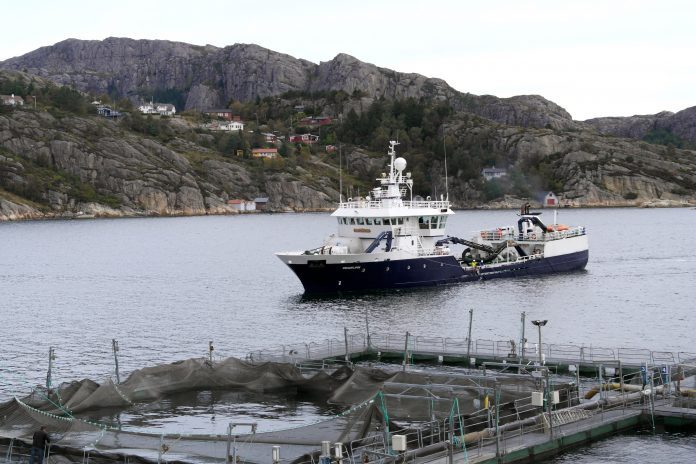With just two weeks left in 2017, it’s clear the year’s average price salmon price has dropped for the first time since 2012.
While last year’s farmed salmon price settle around an average EUR 6.27 a kilogram, this year’s salmon average price is just under EUR 6.07. Historically, that’s a sky-high price, but just as fully a (seldom) fall in price from a year ago.
Usually, there’s an explanation for the fall in price on the supply side — supply growth higher than the underlying long-term demand growth for salmon, between six and eight percent, normally produces a drop in price.
That’s not been the problem this year.
Moderate growth
The Year 2017 is heading for a certain amount of global supply growth, but it’ll be lower than the long-term demand growth. Just the same, there’ll be a fall-back in fish prices.
This year, the most important explanation for this phenomenon lies with the supermarkets. After several years of rapid raw-material price increases and slim margins, they’ve collectively chosen to keep retail prices for the end customer high, even after a fall in the procurement price.
They’re choosing a high amount of coverage over volume in their fresh-fish counters. That’s what salmon farmers will now to have to reckon with.
 Slow-down
Slow-down
So what about next year? SEB expects supermarket chains will drop their sales prices, and that is expected to simulate consumer demand and ensure the supermarkets drain away much more salmon than they did this year.
That might be needed. Based on consensus estimates, a significant supply increase is expected next year. Marine Harvest guidance is for supply growth of between four and nine percent in 2018. Nordea Markets estimates are eight percent.
That means upwards of 200,000 tonnes more salmon to sell in 2018 compared to 2017.
Costs
This will naturally place an entirely new set of demands on sales and marketing cooperation than existed during the past year’s high price index. Regardless, the brokerages who follow the sector expect supply growth to be offset by the fall in price — to a level somewhere below EUR 6.00.
So, it remains to be seen whether salmon farmers will succeed in stabilizing or reducing their production costs for salmon. With their breakeven of around EUR 4.00 a kilo, it doesn’t look like there’ll by any corporate drama in 2018, but it won’t take much in the way of cost increases before investors start looking to put their money in other sectors.

